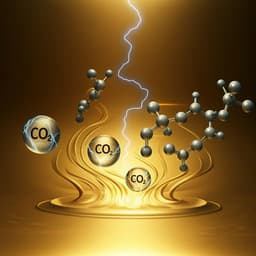
Chemistry
Steering carbon dioxide reduction toward C-C coupling using copper electrodes modified with porous molecular films
S. Zhao, O. Christensen, et al.
This groundbreaking research conducted by Siqi Zhao, Oliver Christensen, Zhaozong Sun, and colleagues reveals how porous bipyridine-based films significantly enhance the performance of copper electrodes in electrochemical carbon dioxide reduction, achieving nearly a tenfold increase in ethylene formation's intrinsic current density and multicarbon product selectivity. Discover the implications of these innovations on CO2RR.
Playback language: English
Related Publications
Explore these studies to deepen your understanding of the subject.







